
|
|

| |
This web page is about the luxury in the cars: woodwork, the interior trimming and the exterior body paint colours.
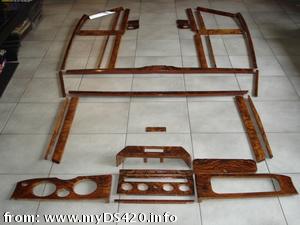
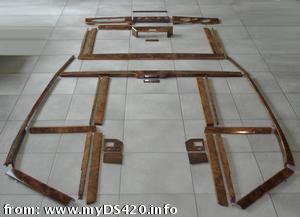
For the restoration of one of my own (1971) limos I took out all its woodwork.
These pictures (click to enlarge) give an overview of the many (34!)
different pieces.
In summer 1972 the interior was redesigned to eliminate almost half
this amount.
More information about this cost-cutting operation is on the
"Model changes during production"
page.
Next we have various colour & trim charts that were published for the DS420 limousine. All except one were meant as additions to sales brochures, and resemble the style of the brochure they came with. However, the colour & trim chart was probably updated more frequent than the corresponding brochure. Therefore, and also because there are so many years missing in the list below, the collection shown here is probably not very complete.
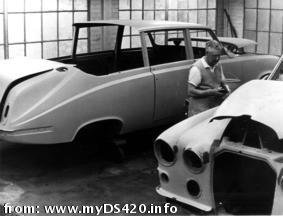 |
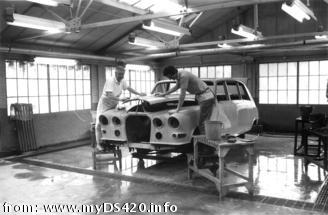 |
The two pictures to the left were also taken at the VandenPlas works in Kingsbury. One of them shows a landaulette body, so this must have been in 1973. These photos are contributed from the archive of the VandenPlas Owners' Club. The photo below is from Jaguar in Coventry, early 1981. It was part of a press release where Jaguar presented the "group assembly" system for the limousine production. See these magazine articles. |
It must be noted that these charts speak about leather and cloth. It is carefully avoided to admit that most of a "leather" interior was actually made of vinyl. E.g. in my 1972 limo all door panels are made of vinyl. The large bench in the passenger compartment is mostly leather, as are the occasional seats. But on the driver's bench only the striped panels (i.e. the parts that actually touch the back and the bottom of the driver) are made of leather. Where a Rolls at that time "consumed" over half a dozen hides, the DS420 did with only one. However, the colour matching between the leather and the vinyl is perfect. The back of the material shows a very clear distinction, but if only the front is accessible, sensing the difference in temperature with your tongue is a good discriminator.
The much used "West of England" wool cloth was made by H.E. Box and Co, of Weymouth (formerly of Bristol), and can still be bought from Boyriven in Weyhill, Andover (Hamps).
For new carpet, you might check the website of BAS International. Especially their "Heritage Carpet" line is really close to the original carpets in my 1971 limo.
Both BAS International, and Woolies are the addresses to go for fasteners, trimming material, etc. For your nuts and bolts in UNF thread, and more ironmonger stuff, try Namrick. For lambswool over rugs, check the website of Easirider Company (the "lambswool" rugs sold by Daimler were imitation, Easirider lambswool is real).
Most colour chart illustrations shown here below may be viewed in larger size by clicking.
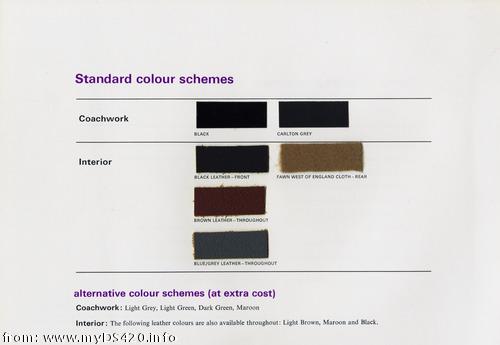 |
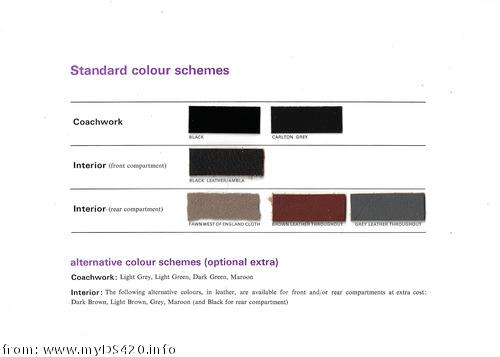 |

| These colour & trim charts were included with the colourful brochures of 1969. Click for a larger view. The charts have no publication number. The back (identical on both versions) lists the optional accessories that were available in this early stage. Later, this listing of options moved to the sales brochures, and finally to the price lists shown elsewhere on this site. |
|
Quite soon after the above colour & trim chart, the design was changed
to match the brochure more closely. You may notice how the curly writing
of the word Limousine became the same as on the
front page of the brochure.
The three different printings shown here
(October 1970, May 1972, April 1973; the dates are mentioned on the
text page), illustrate how the update frequency of the chart was higher
than the reprinting frequency of the brochure.
The front page, which did not change, is only shown here once.
The October 1970 chart has publication No. 5M 9/70, the May 1972 chart has publication No. 17/3(43638) 572/5M DCC, and the April 1973 chart has No. 17/3(84679) 10m ADA51. |
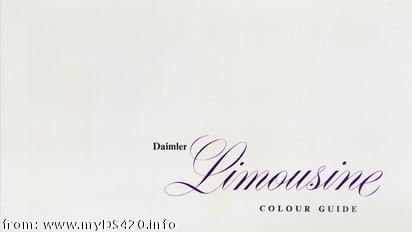
|
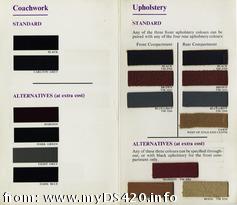
|
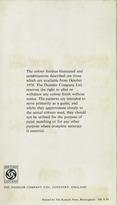
|
||||||
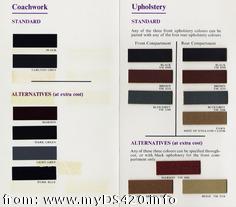
|
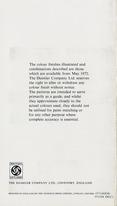
|
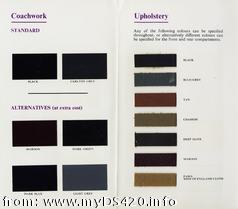
|
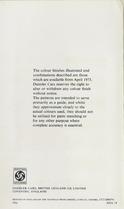
|
|||||
|
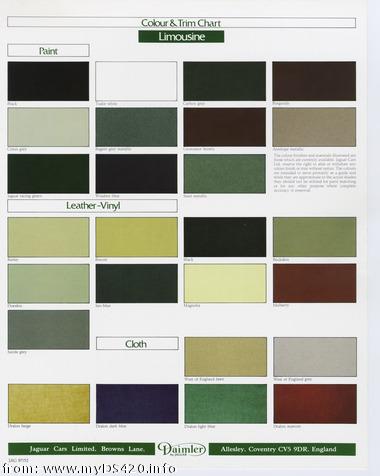
|
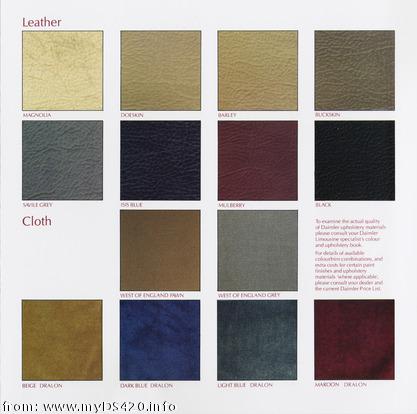
|
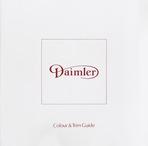
|
|||
|
The last chart in the collection came with the
1988 sales brochure.
The chart has the same cover printing as the brochure.
This chart has publication number JAG 88/53.
It was also used in combination with the later (JAG89/L1, 1989) sales brochure. |
||||
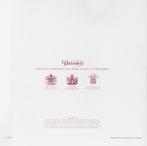
|
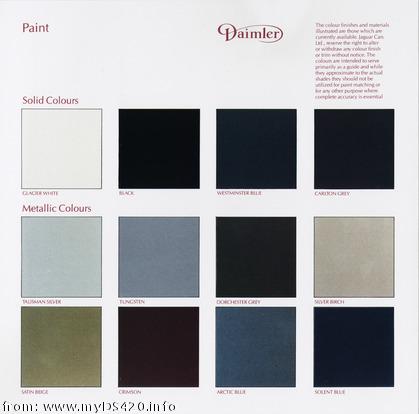
|
|||